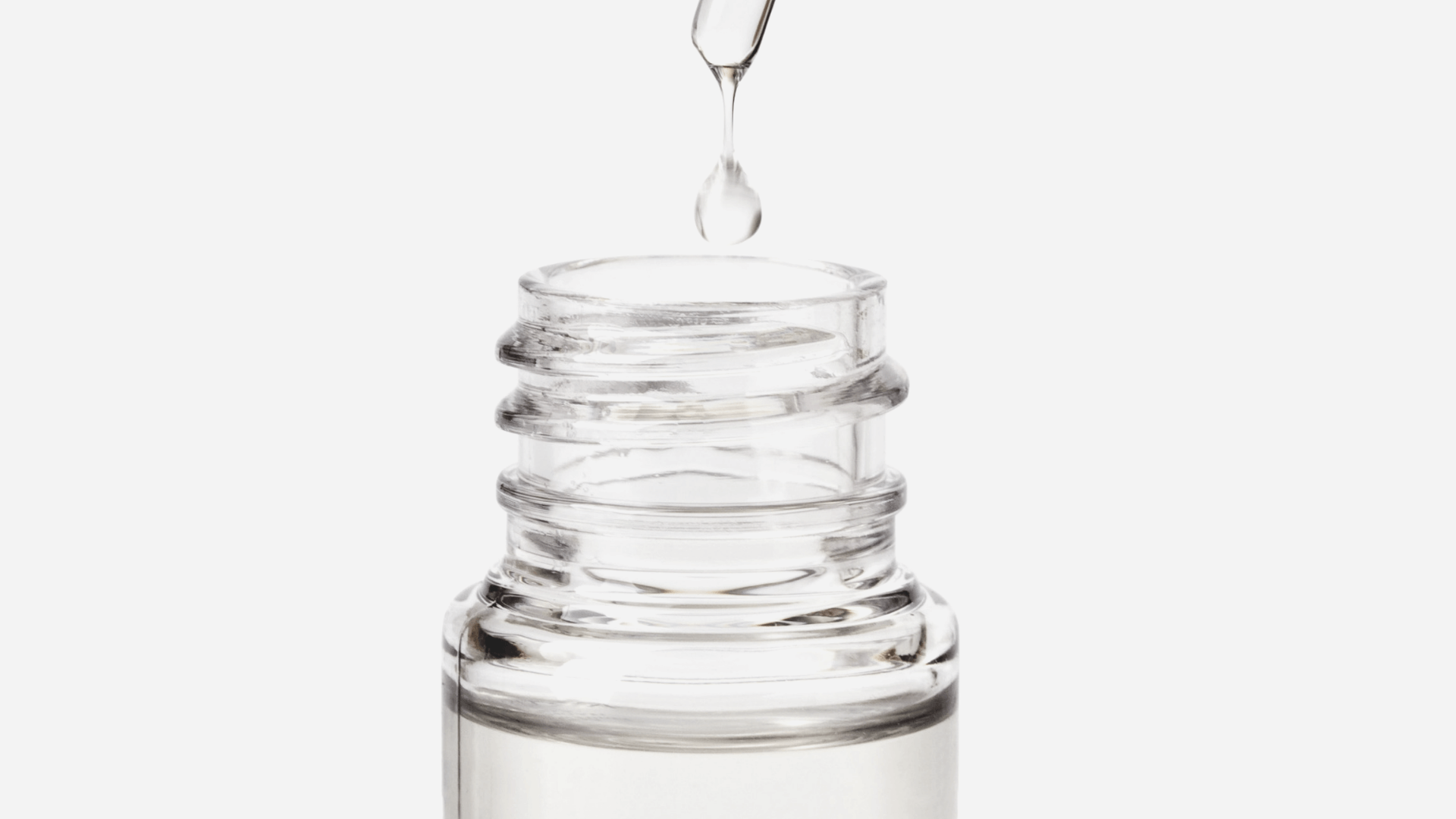This is fairly nitty-gritty, but today I have antinutrients information for your gut healing journey.
A few things:
- I was first inspired to write this after I wrote the Zinc post and mentioned, “Note that with grains and legumes, zinc absorption is reduced due to high levels of phytic acid. For this reason, meat and seafood are better choices. However, I understand both the not-wanting-to-over-meat and also the healing sides so I like to incorporate various sources.”
- And then I wanted to write about it because I published the oatmeal bowl “recipe” I have nearly every single day for breakfast. Each time I say I eat oats, the “healthy” police come out and tell me how that’s not healthy at all.
- The reason I haven’t written about antinutrients until now is because this topic is nitty-gritty. In other words, I don’t believe the antinutrient debate is the thing which prohibits gut healing on a long-term basis.
So with that, let’s break this all down.
Antinutrients Information for Your Gut Healing Journey
Click HERE to save this post for later.
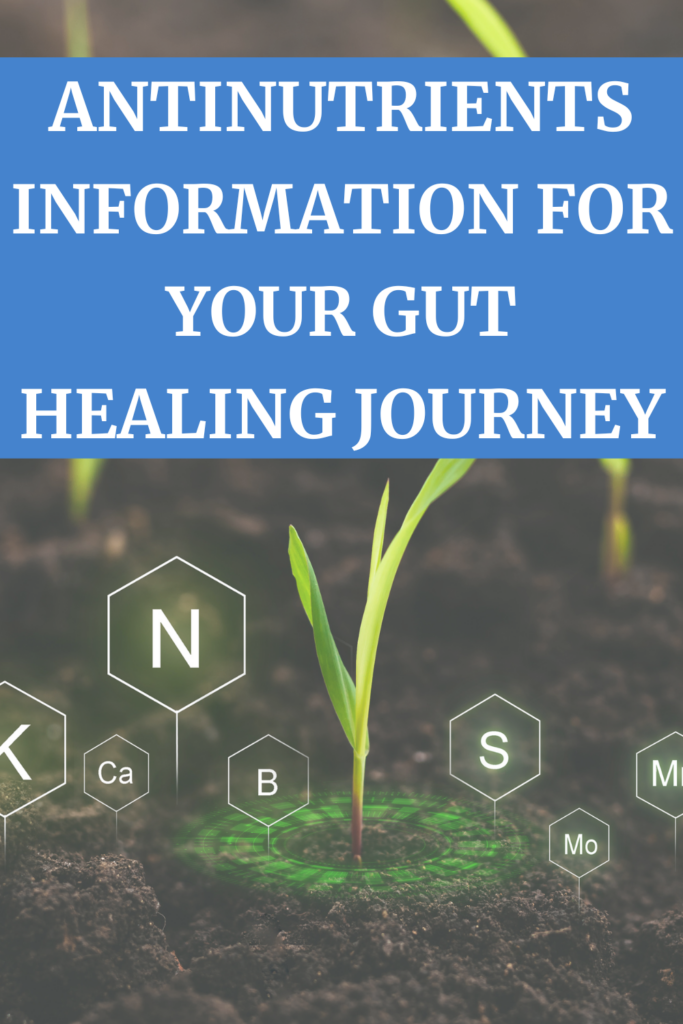
What is an Antinutrient?
In the beginning, I was just going to write about phytic acid. But that’s not the only antinutrient you’ve seen and are curious about.
While there are even more than what I’m going to discuss today, here are the three I’m focusing on today:
- Lectins
- Oxalates
- Phytates (phytic acid)
For reference, here are other antinutrients you’ll see talked about: saponins, tannins, glucosinolates, gluten, trypsin inhibitors, isoflavaones, solanine, and chaconine.
At its core, an antinutrient is a chemical found in plants that keep your body from absorbing essential nutrients from food.
They can be natural or synthetic, and they interfere with the absorption of vitamins, minerals and other nutrients.
If they are not broken down properly, the following symptoms and issues can arise: nausea, bloating, headaches, rashes, and nutritional deficiencies.
This is a general graphic of various types of antinutrients in different foods and the amount they contain. (source)

Lectins and Your Gut
Lectins are naturally occurring proteins that are found in most plants.
They have been linked to Leaky Gut Syndrome so many with gut problems avoid them. It has been stated that “eating large amounts of certain types of lectins can damage the gut wall.
This causes irritation that can result in symptoms like diarrhea and vomiting. It can also prevent the gut from absorbing nutrients properly.”
It’s interesting, too, because peanuts are high in lectins.
If you know my story, you know that while I was on the rigid GAPS Diet healing protocol A Loving Spoon nut butters was born.
The most popular flavor was the Honey Vanilla Bourbon Peanut Butter which contains, of course, peanuts. Yet, even peanuts were allowed on the GAPS Diet.
I never thought they were prohibiting my own gut healing.
In fact, though lectins are highly debatable in the gut healing community, I’m still not entirely sold on the idea that all lectins are causing your gut problems.
It might just be a food or two which happens to be a lectin.
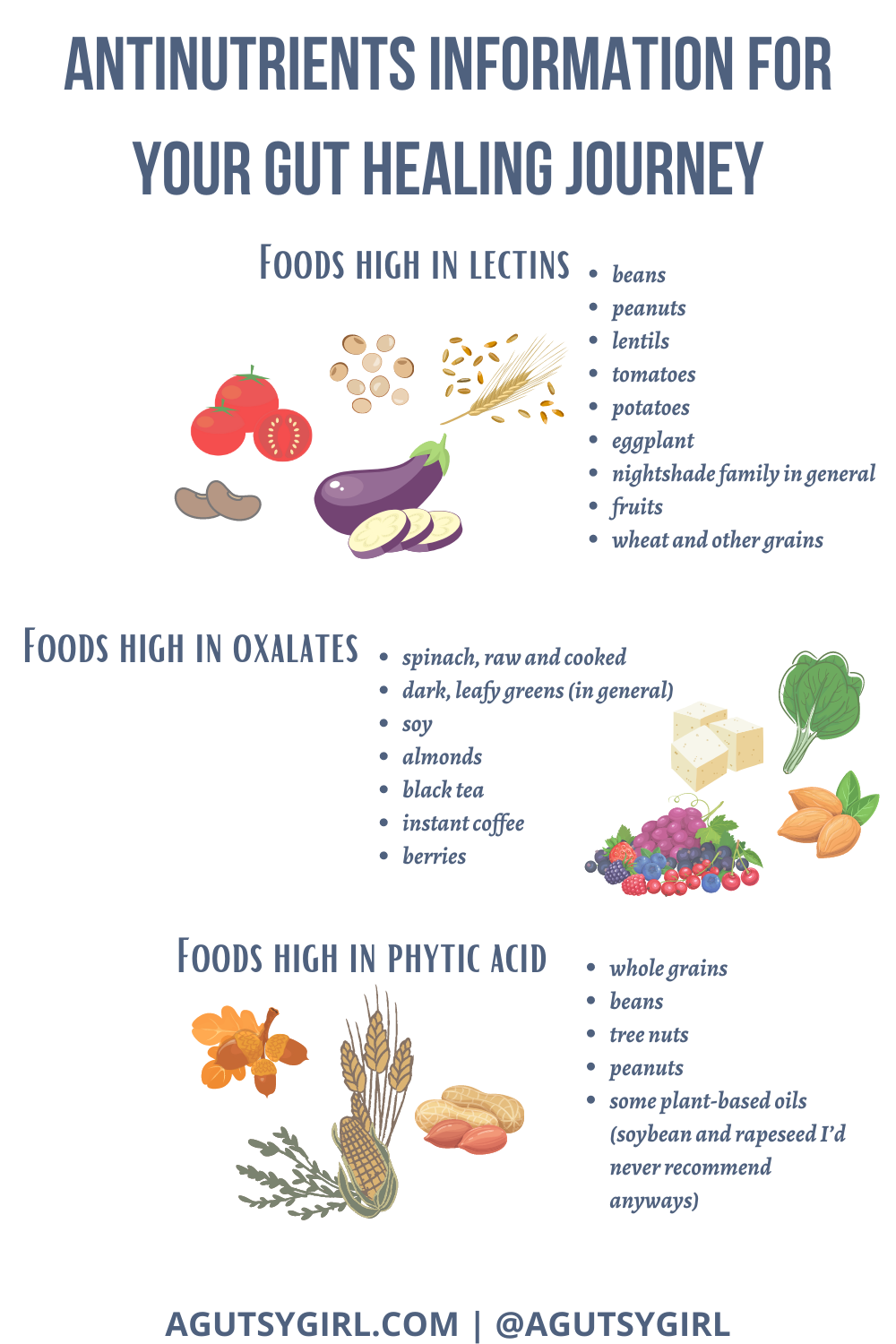
Foods high in lectins
- beans
- peanuts
- lentils
- tomatoes
- potatoes
- eggplant
- nightshade family in general
- fruits
- wheat and other grains
Oxalates and Your Gut
Oxalate is a compound found in some foods, and it is also produced as a waste product by the body. It exits the body through the urine. Too much oxalate may cause kidney stones in some people.
Oxalates fall into the antinutrient category because they bind to calcium and prevent its absorption in the human body.
According to Dr. Sara Gottfried,
You have to be sensitive to them, because of your genetics, gut bacteria (dysbiosis, or missing the microbes that process them), or nutritional deficiencies, like vitamin B6, magnesium, and thiamine. The gene involved in oxalate breakdown is called SLC26A1. The bacteria that break down oxalates are the Oxalobacter formigenes and Lactobacillus species. Eating too many oxalates, like more than 250 mg a day, also puts you at risk for problems.
Foods high in oxalates
- spinach, raw and cooked
- dark, leafy greens (in general)
- soy
- almonds
- black tea
- instant coffee
- berries
Make note: According to The Paleo Mom, oxalates are not even an antinutrient. Oxalate is a salt.
What do you think?
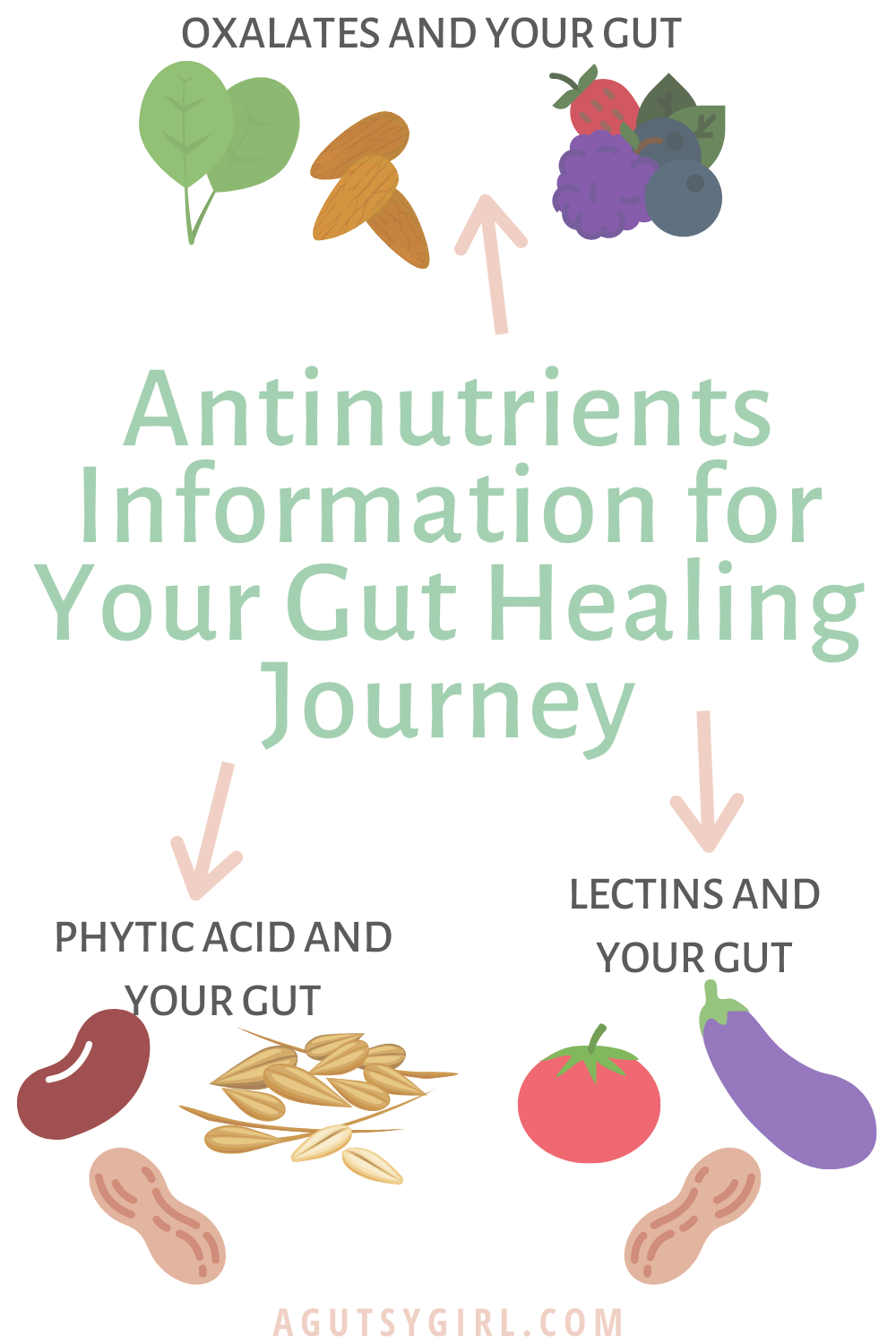
Phytic Acid and Your Gut
Phytic acid is the storage form for phosphorus.
When phytic acid is bound to a mineral in the seed, it’s known as phytate.
It has the strong ability to chelate multivalent metal ions, especially zinc, calcium, and iron.
The binding can result in very insoluble salts that are poorly absorbed from the gastrointestinal tract, which results in poor bioavailability (BV) of minerals.
Additionally, phytates can also reduce the digestibility of starches, proteins, and fats.
Foods high in phytic acid
- whole grains
- beans
- tree nuts
- peanuts
- some plant-based oils (soybean and rapeseed I’d never recommend anyways)
How to minimize effects of antinutrients
First, please remember that with antinutrients, the amount makes the “poison.”
In other words, in order to truly have a negative effect, you’d likely have to eat a huge amount.
And even still, if you’re concerned, here are ways to minimize the effects of antinutrients (depending on the food):
- cooked vs. raw foods
- sprouting
- baking
- processing
- soaking (i.e. beans)
- fermenting (i.e. vegetables)
- yeast leavening
Finally, if you are keeping a food journal, identifying if the above foods are or are not affecting you is far easier.
If you want to get started today keeping track, download the PDF version of my gut healing journal HERE.
Or, order the beautiful, printed version to be shipped directly to your doorsteps.
Sources: HERE, HERE, HERE, HERE, HERE, and HERE.
Thoughts? Questions?
If you liked this post, you might also enjoy:
- 15 Supplements for Stomach Lining Support
- How to Heal Leaky Gut Syndrome Fast
- Imagine Your Gut Healed
Xox,
SKH
🤰 bloating be gone! weight loss through optimal gut health for women
💃ʜᴇᴀʟ ʏᴏᴜʀ ɢᴜᴛ. ʜᴇᴀʟ ʏᴏᴜʀ ʟɪfe.
🫶🏻 founder gutbyome.com

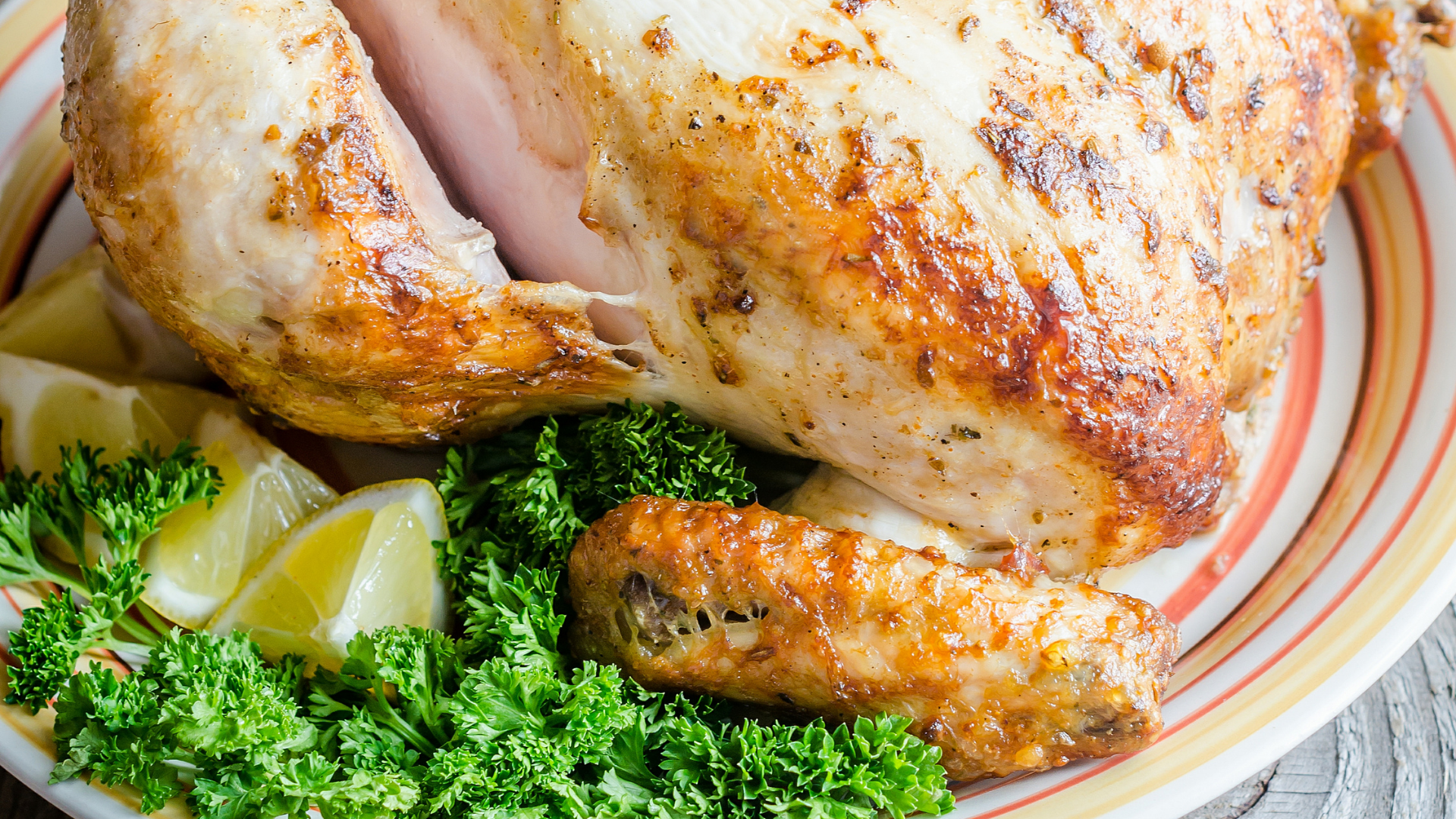
![Micronutrients and the Gut [Episode 54 with Bernadette Abraham]](https://agutsygirl.com/wp-content/uploads/2022/10/ep-54-Micronutrients-and-the-Gut-Episode-54-with-Bernadette-Abraham-agutsygirl.com_.png)
![Redness around Nose [Brazen]](https://agutsygirl.com/wp-content/uploads/2013/09/skin-health-featured-agutsygirl.com_.png)
